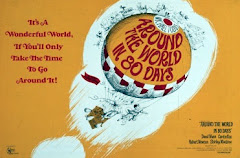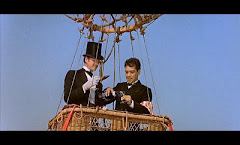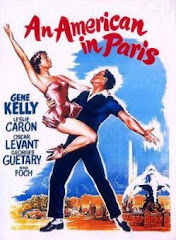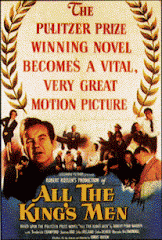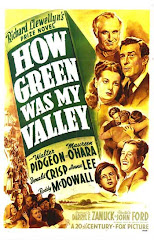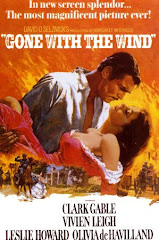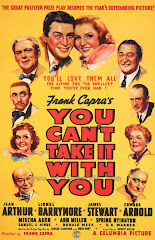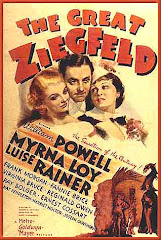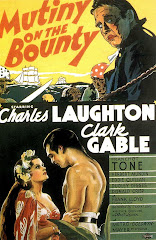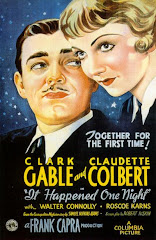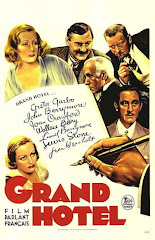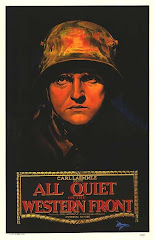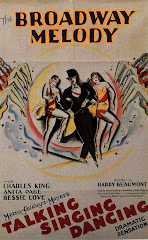Director: Wesley Ruggles
Cast: Richard Dix, Irene Dunne, Estelle Taylor, William Collier Jr.
Genre: Western
Other Nominees: East Lynne, The Front Page, Skippy, Trader Horn
The western movie was wildly popular in the silent era of film (1920’s) but the market was oversaturated by the time sound was introduced in 1927/28 and the quality of the productions diminished to “pulp” status. Literally thousands upon thousands of western serials and films were made during the 1920’s which makes the lack of many westerns in the early years of audio in film is all the more noticeable. It is fair to say that even with this best picture win in 1931 the genre did not recover until the 1940’s when John Wayne sauntered onto the big screen.
With most major studios avoiding the genre at the time it is interesting that RKO studios attempted to revitalize the western with Cimarron. And it is outright amazing that in the height of the Great Depression RKO studios paid Edna Ferber $125,000 for the rights to her novel and would go on to invest 1.5 million dollars into the film. Even by modern standards that is an impressive amount of money being spent.
Within the first 10 minutes you can see where this money was spent as the film depicts the Oklahoma Land Rush of 1889 with some fantastic scenes. After the United States purchases Oklahoma land from the Indians, for a small percentage of its worth, thousands of people flock there to claim their stake and settle. The opening shots show these thousands of men on horseback, families in wagons, and desperate people on foot racing across the fields to their futures. What is amazing as a modern movie watcher is the lack of computer generated imagery. When a modern film maker needs to accomplish a scene like this they shoot a few hundred extras and use computers to fill in the rest. I was immediately impressed at the sheer numbers of extras (apparently in the thousands) used to create what you see on screen.
Equally as obvious to a modern movie watcher are the racist statements and scenarios that pepper this film. Anyone today will cringe at the statements made towards African Americans and Native Americans. The only prominent character representing the former peoples is a simple slave boy who embodies the fact that slavery was just a social norm in those days.
The Native American peoples are referenced constantly as “dirty and filthy” but at least they get some reprieve from our hero who appears to understand the Native American way of life. He fully comprehends that the Indians are being swindled by the American government in this land deal and comments on it a number of times. He even prints an article in his paper begging for equal rights for Native Americans. However, his awareness of the plight of Native Americans does not stop him partaking in the white man invasion on the Indians land.
This example is not the only contradiction that our hero possesses. Cimarron tells the story of Yancey Cravat and he is a convoluted hero to say the least. Much like Clint Eastwood’s character in Unforgiven Yancey has a dark past and references to his gunslinger days are found throughout the story. In one scene the camera focuses on the notches etched into his gun with each one representing a man he has killed. And yet despite his vicious background he is revered by even the prestigious members of the community and is even asked to perform the duties of minister and preach to the townsfolk.
He is an educated man and defends a local harlot in trial because it is the right thing to do. Yet he also earns his respect by battling bandits and gangs from attacking the town. In these examples we see that he is both physically strong and intelligent and performs heroic deeds using both sides to his character.
But his heroic deeds and status are diminished when we see his failure as a family man. The title word of this movie translates into “wild and savage” and the fact is that Yancey is a man who cannot settle in one place and raise a family. He loves his wife and children but the longest he has ever been in once place for is 5 years and the call of the wild continuously lures him away to new adventures, whether it is to partake the second land rush or to fight in the American-Spanish war. Again we see his dual nature here as he is both a hero and a failure.
For me this is the most interesting aspect of this movie. Here is a man who achieves legendary status in his lifetime. He becomes the Oklahoma Pioneer that we see celebrated at the end of the film. And yet he hurts the ones he loves to get there. He abandons his family for this status. The ultimate question is who would you rather be, a legend to the community or a hero to just your family?
This film was made in 1930 and the last few scenes of the movie take place in 1929. So the subject matter that this movie deals with is actually very recent history. I will say that equally as impressive as the opening land rush scenes is the explosive expansion of the boom town of Osage. The story jumps through a span of 40 years from 1889 to 1929 and it is absolutely amazing to watch the aggressive growth of the city in those years. A repeated line from the movie states that all this came “up from raw prairie overnight” and as Yancey himself states this was a time for a new empire and for the building of a new country. How interesting must it have been to see this building of a new empire on screen less than 50 years later when the country, and the world, was in the midst of a Great Depression? I am not sure that I would have shared Yancey’s enthusiasm for adventure that is for sure.
Next Up: Grand Hotel
Wednesday, October 14, 2009
Sunday, October 4, 2009
All Quiet on the Western Front (1930)
Director: Lewis Milestone
Cast: Lew Ayres, Louis Wolheim, John Wray, Slim Summerville, William Bakewell
Genre: War
Other Nominees: The Big House, Disraeli, The Divorcee, The Love Parade
This film itself is shocking in many ways but for me what I find most shocking is the fact that within ten years of its release another great World War was underway. That fact leaves me asking whether as human beings we can ever learn from our past. All Quiet on the Western Front is a harrowing and brutal portrayal of life in the trenches of World War I. And when I say harrowing I mean it. Do not make the same mistake I made and think that movies from this time were not capable of being as gritty as movies today. It may lack the gore that is prevalent in today’s films but it is no less hard hitting.
I cannot put it better than a 1930 Variety magazine review put it:
The story follows a classroom of teenagers from a small German town. The first few minutes of the movie stay within this town where patriotism is running rampant. The people are in fervor as they send off the latest batch of troops to the front line, with parades and celebrations in full swing. Of course the young impressionable minds are swayed by this euphoria, and when coupled with the fact that their teacher is lecturing them about the heroism of war, the result is a mass enlisting in the army.
It is clear that this is the first ever anti-war movie. The message is loud and clear: whatever pride you imagine comes with being a soldier will be destroyed when you arrive at the front line and when you face the horrors of war. There is a clever daydreaming sequence in the beginning where we see all kinds of imagined pride that the boys can think of.
We spend the rest of the movie following this same classroom as their numbers dwindle. The sheer range of horrors touched upon is incredible and it is not long before the young soldiers are showing signs of great stress: nightmares, shaking uncontrollably, and screaming about the unrelenting bombs. There is no real score for this film, instead as viewers our ears are subjected to the screeching and impacts from those bombs. With the exception of a few scenes the sounds of bombing are ever present. And accompanying them is a continuous run of amputation, rat infestations, starvation, shrapnel wounds, bayoneting, and so on. It really does get brutal in parts. The chaos, confusion and fear can be felt as we watch these young men struggle.
It has to be said that the real focus of the film is on the impact that these events have on the minds of the soldiers. Most of them suffer from streaks of madness or hysterical reactions as the stress builds. After the credits roll the following words are displayed on screen:
So again I come back to the fact that I cannot believe that less than two decades after the events from this movie the world was once again fighting another war! It is interesting that Universal re-released the film in 1939 at a time when this second war was raging. Apparently anti-Nazi announcements were read out throughout the film but the aim was to remind people of the horrors of wars in a time of international unrest. The Nazi party went on to ban the film in Germany.
I am somewhat in awe of this film and am not surprised at all at its best picture nomination. I have a feeling it would still win many awards if it was released as is today.
Next Up: A hopefully less intense Cimarron (the first western to win Best Picture)
Cast: Lew Ayres, Louis Wolheim, John Wray, Slim Summerville, William Bakewell
Genre: War
Other Nominees: The Big House, Disraeli, The Divorcee, The Love Parade
This film itself is shocking in many ways but for me what I find most shocking is the fact that within ten years of its release another great World War was underway. That fact leaves me asking whether as human beings we can ever learn from our past. All Quiet on the Western Front is a harrowing and brutal portrayal of life in the trenches of World War I. And when I say harrowing I mean it. Do not make the same mistake I made and think that movies from this time were not capable of being as gritty as movies today. It may lack the gore that is prevalent in today’s films but it is no less hard hitting.
I cannot put it better than a 1930 Variety magazine review put it:
The League of Nations could make no better investment than to buy up theClearly the League of Nations ignored this advice as despite being released eleven years after the end of World War I the stance taken in this film did not prevent the outbreak of another World War nine years later. Perhaps if the world had been forced to see this film things would have worked out differently.
master-print, reproduce it in every language, to be shown in all the nations
until the word "war" is taken out of the dictionaries.
The story follows a classroom of teenagers from a small German town. The first few minutes of the movie stay within this town where patriotism is running rampant. The people are in fervor as they send off the latest batch of troops to the front line, with parades and celebrations in full swing. Of course the young impressionable minds are swayed by this euphoria, and when coupled with the fact that their teacher is lecturing them about the heroism of war, the result is a mass enlisting in the army.
It is clear that this is the first ever anti-war movie. The message is loud and clear: whatever pride you imagine comes with being a soldier will be destroyed when you arrive at the front line and when you face the horrors of war. There is a clever daydreaming sequence in the beginning where we see all kinds of imagined pride that the boys can think of.
We spend the rest of the movie following this same classroom as their numbers dwindle. The sheer range of horrors touched upon is incredible and it is not long before the young soldiers are showing signs of great stress: nightmares, shaking uncontrollably, and screaming about the unrelenting bombs. There is no real score for this film, instead as viewers our ears are subjected to the screeching and impacts from those bombs. With the exception of a few scenes the sounds of bombing are ever present. And accompanying them is a continuous run of amputation, rat infestations, starvation, shrapnel wounds, bayoneting, and so on. It really does get brutal in parts. The chaos, confusion and fear can be felt as we watch these young men struggle.
It has to be said that the real focus of the film is on the impact that these events have on the minds of the soldiers. Most of them suffer from streaks of madness or hysterical reactions as the stress builds. After the credits roll the following words are displayed on screen:
This story is neither an accusation nor a confession, and least of all an
adventure, for death is not an adventure to those who stand face to face with
it. It will try simply to tell of a generation of men who, even though they may
have escaped its shells, were destroyed by the war...
So again I come back to the fact that I cannot believe that less than two decades after the events from this movie the world was once again fighting another war! It is interesting that Universal re-released the film in 1939 at a time when this second war was raging. Apparently anti-Nazi announcements were read out throughout the film but the aim was to remind people of the horrors of wars in a time of international unrest. The Nazi party went on to ban the film in Germany.
I am somewhat in awe of this film and am not surprised at all at its best picture nomination. I have a feeling it would still win many awards if it was released as is today.
Next Up: A hopefully less intense Cimarron (the first western to win Best Picture)
Subscribe to:
Posts (Atom)
